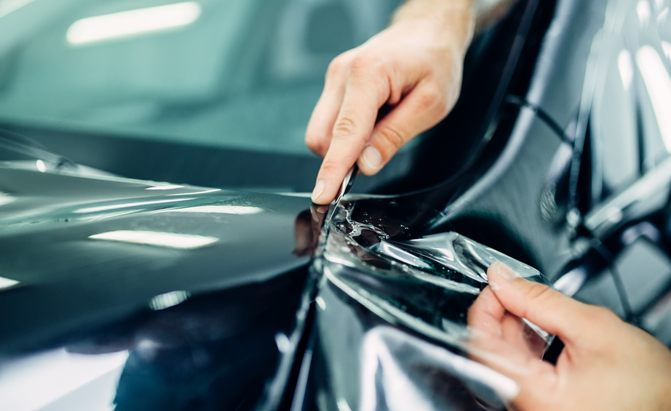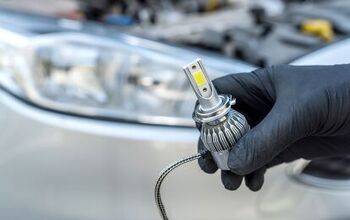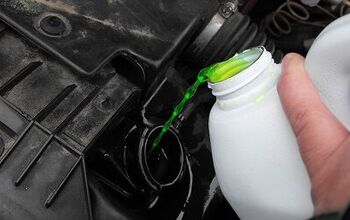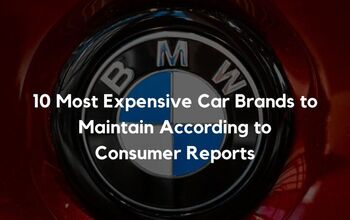Top 5 Best Paint Protection Films for Your Car

One important but often overlooked vehicle maintenance product is paint protection film.
Clear paint protection films can be applied to areas of your car’s body where the paint may become scratched or nicked. Some vehicle owners will apply the film to the front of their vehicle to protect the paint from stone chips, sticky bug grime, and other debris. It can also be applied elsewhere on the car where the paint may become damaged, such as behind door handles or on the rocker panels.
You can choose to have paint protection film professionally installed or you can do it yourself. If you want to install paint protection film yourself, you’ll probably want to buy the product online as it’s cheaper than in a store and you’ll have a greater selection to choose from. In this post, we’re going to show you our preferred paint protection films, explain what’s good about them (or what may not be so good) and answer any questions you may have in regards to purchasing or installing such products.
1. Editor's Pick: VViViD 3M Scotchgard
We like 3M’s Scotchgard as it is a very long-lasting clear paint protection film. The 3M company is also a global leader in films, adhesive products, and laminates. The company’s paint protection film is a clear polyurethane film that is 8 mils (0.0008″) thick with adhesive backing.
This very thin, transparent film can be applied to the front of your vehicle, acting as a clear “bra” to shield your car from debris. Users say it’s long lasting, extremely sticky and relatively easy to apply—although working with vinyl film can be tricky if you’ve never done it before.
We’d suggest buying more of this film than you think you’ll need. That way you will have some leftover if you make a mistake and you will also have addition film if you ever want to reapply it to your vehicle.
While this product is very thin and thus hard to see once applied, some users say it is too thin. We’d suggest it to those who wish to protect their vehicle’s paint but want the protective film to go unnoticed.
Pros | Very thin, very sticky, well priced |
Cons | Can be hard to apply, may be too thin for some |
Bottom Line | Our top suggestion for paint protection film |
2. XPEL Clear Paint Protection Film
XPEL is a well-known purveyor of automotive paint protection products and we’d comfortably suggest its paint protection film to any vehicle owner. Like 3M’s Scotchgard paint protection film, XPEL’s product is a clear polyurethane film that is 8 mils thick. It’s available in three different sizes: 6″ by 25″, 6″ by 60″, and 6″ by 84″.
This film is nearly invisible when applied and goes on even clearer than 3M’s Scotchgard film. It’s not as protective as the 3M Scotchgard, however, and is a bit pricier.
XPEL also makes a very high-quality door sill clear film guard for protecting your door sills and rocker panels from scratches, swirls, or damage.
Pros | Nearly invisible once applied |
Cons | Not as thick as 3M Scotchgard |
Bottom Line | A good alternative to 3M Scotchgard that goes on a bit clearer, but is less durable |
3. SunTek Top Coated Paint Protection Film
SunTek’s paint protection film is typically only sold in large quantities (it’s typically used by professionals, hence the bulk unit sizes) but that makes it good for covering the entire front end of your car or truck, including the hood. It also means you’ll have lots left over if you want to cover other parts of your vehicle, apply it to another vehicle or have some spare film for later. The film also has a lot of household uses.
SunTek’s film is a “self-healing” polyurethane film that is 8 mils thick. If scratches or swirls appear in the film, just pour hot water over it and they’ll disappear. SunTek also sells matte film in addition to the usual gloss film, so it can be used on matte paint jobs. It’s also backed by a five-year manufacturer’s warranty. Compared to 3M film, SunTek’s goes on clearer, although the adhesive is not as sticky and 3M film is also not “self healing.”
Pros | Self healing properties, is nearly invisible once applied |
Cons | Only sold in large quantities, can be difficult to apply |
Bottom Line | A professional-grade clear protection film that's high quality but pricey |
4. Karlor Vinyl Wrap Film
Karlor’s vinyl wrap film is the least expensive product on this list.
It doesn’t have the same quality as 3M Scotchgard, for example, but will save you a little bit of money up front. The manufacturer says this product has an acrylic-based adhesive that’s not overly sticky, making it easy to reposition during installation. It predicts the film will last around 4-7 years outdoors and up to 10 years indoors. This particular product is made from PVC and is 0.17 mm thick.
While not backed by a reputable manufacturer like 3M, this film is inexpensive, will go on clear, and will protect your car from scratches and nicks.
Pros | Inexpensive, easy to install |
Cons | May not be as durable or long-lasting as 3M Scotchgard or competing films |
Bottom Line | On a budget? This may be the paint protection film you're looking for |
5. VViViD Clear Paint Protection Film
This paint protection film from VViViD aims to be easy to apply—it can be stretched without having to use a heat gun and features “ultra conformable” compounds so it will contour to whatever you’re trying to apply it to. Like Karlor’s film, this product features air-release acrylic-based adhesive that can easily be repositioned, installed, and removed without the need of harmful chemicals.
This inexpensive film is also highly resistant to abrasions, light damage, and yellowing, the manufacturer says.
With a cheap entry-price and good durability, the VViViD Clear Paint Protection Film is a decent product, although we’d say it’s inferior to others from 3M, XPEL, and SunTek.
Pros | Inexpensive, easy to apply |
Cons | Not as good quality as similar products |
Bottom Line | A nicely priced, decent quality paint film, but we'd probably suggest more well-known brands |
Add On: 7MO Vehicle Vinyl Film Tool Kit for Car Wrapping
If you buy protective film with the intent of installing it on your vehicle yourself, you may also want to have a look at this helpful, inexpensive installation kit. It basically includes the tools you’ll need to install the film yourself, including a durable felt-edge squeegee, a very helpful vinyl cutter, a 60-degree retractable knife with snap off blades, and extra replacement blades.
How Do I Install Clear Paint Protection Film?
Installing paint protection film on the front of your car is simple in theory, but can be difficult in practice.
To install your clear paint protection film, you’ll want to ensure that your vehicle is completely clean of any grime, dirt, or debris beforehand. Give the area you’ll be covering with film an extra wipe down after washing just to be sure.
You’ll then want to spray the area you’re going to cover with soap and water, along with the back of the film. Lift one side of the film up and spray it with a 75% water and 25% isopropyl alcohol solution. This will wash the soap away and allow the film to adhere to the vehicle’s surface. You can then move the film into its desired position.
You can then spray the surface of the film with the solution and use a squeegee to remove any of the soapy water or solution that is sitting between the surface of your vehicle and the protective film. Use the squeegee to work any air bubbles out of the surface.
We suggest performing this entire action over one half of the vehicle before restarting from the beginning for the second half.
We’ve embedded a helpful video from Install Proz on YouTube below that will show you step-by-step how to install protective paint film.
What Materials Does Protective Film Stick to?
Most protective paint films will stick to plastic and metal – so you can apply it to your headlights, bumpers, door sills, and elsewhere on your vehicle without issue. Automotive grade protective paint films are different than similar marine or aircraft grade products, so the products seen on this list should be used on cars, trucks, and SUVs only.
Protective paint films can also be used to protect indoor surfaces and much more.
Can You Cover an Entire Vehicle With Protective Paint Film?
Yes, although we don’t suggest this.
Most protective paint films are designed to be used on vulnerable areas of the vehicle – the hood, bumpers, rocker panels, and door sills, for example.
Covering your entire vehicle in such products, while definitely a possibility, would be time-consuming and expensive. If you want to protect your entire vehicle from scratches, swirls, and damage, consider getting a professionally installed vinyl wrap, instead of applying mass amounts of protective film.
We are committed to finding, researching, and recommending the best products. We earn commissions from purchases you make using the retail links in our product reviews. Learn more about how this works.
Photo credit: Nomad_Soul / Shutterstock.com
Our Final Verdict
Which paint protection film you choose is less important than how it is installed. While we suggest opting for a product from a well-known manufacturer such as 3M or XPEL, many paint protection films on the market today will perform as advertised. Ensuring you install your paint protection film correctly so that no grime or dirt is underneath it when it is applied is paramount. You also want to avoid air bubbles. This will ensure the longevity of the film and ensure it doesn't harm the paint underneath. In conclusion, no matter which paint protection film you buy, ensure to buy a little bit extra just in case you need to reapply it. This way, you won't have to settle for a less than ideal install and can apply it perfectly. You can also buy paint protection film online and have an expert install it, which can save you a little bit of money as well.
We are committed to finding, researching, and recommending the best products. We earn commissions from purchases you make using the retail links in our product reviews. Learn more about how this works.

Sam McEachern holds a diploma in journalism from St. Clair College in Windsor, Ontario, and has been covering the automotive industry for over 5 years. He conducts reviews and writes AutoGuide's news content. He's a die-hard motorsports fan with a passion for performance cars of all sorts.
More by Sam McEachern






































Comments
Join the conversation
Hey Sam. How many different films did you apply in this head to head test? With so many manufacturers of ppf film, I’ve found it’s virtually impossible to test each product side by side. I’ve been searching for an article, YouTube video or anything that performs an all-encompassing real life test. Any help is much appreciated as we are adding ppf to our portfolio.
Thank you.
Patrick
Detail Oriented of NTX